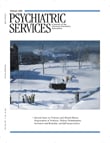Biological Influences on Criminal Behavior
The book Biological Influences on Criminal Behavior provides an integrative approach to considering criminal behavior. Gail Anderson is a professor of forensic entomology—or the use of insect evidence at crime scenes—in the School of Criminology at Simon Frasier University. In this book she considers the role of biology in criminal behavior and how biology interacts with sociological forces to lead to crime.
Anderson reviews the history of defining crime as a disease of thought and discusses the abuses of this definition, culminating in the eugenics movement of the 19th and 20th centuries. While condemning past abuses of biological explanations for crime, the author argues that understanding how biology influences crime can offer hope for effective treatments for offenders.
The book describes Darwin's theory of natural selection and discusses how natural selection influences behavior. It contrasts genetic influences on behavior with learned behavior as applied to aggression and crime. The author provides multiple examples of genetic variations that may correlate with increased violence risk. In particular, she provides an insightful and thorough review of the scientific literature concerning the debate about whether men with an extra Y chromosome have a higher propensity for violence.
The author reviews adoption and twin studies pertaining to biological influences on maladaptive behavior. The book offers the reader clear and concise depictions of fetal alcohol syndrome, conduct disorder, attention-deficit hyperactivity disorder, and birth defects, with possible explanations of how these conditions can interact with sociological factors to increase the risk of criminal behavior.
Next, Anderson considers the function of hormones and how hormonal imbalance can result in increased aggression. In the chapters regarding organic brain dysfunction, the author describes the relationship between childhood head trauma and criminal behavior. Also discussed is the correlation between adult brain trauma and subsequent personality changes expressed in new-onset criminal behavior.
The author poignantly reviews the checkered history of psychosurgery and describes current psychosurgery applications to criminal behavior. Also, she describes current brain imaging techniques with potential applications to understanding biological influences on crime. Finally, in the last chapter, the author discusses the impact of metabolic diseases, nutritional deficiencies, and metal toxins on the brain, questioning whether these factors are either correlated with or can predict future crime.
The author provides an encompassing overview of biology's influence on criminal behavior. This book is a useful introduction for readers new to biology, genetics, and psychology. It also offers a review of relevant scientific literature to the advanced reader. It is well suited for both mental health and corrections professionals who wish to better understand the relationship between biology and crime.



